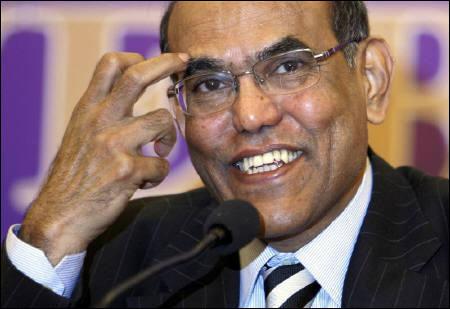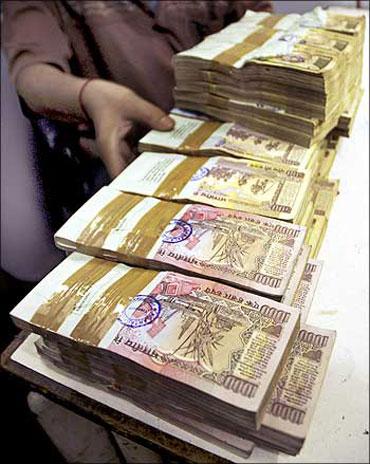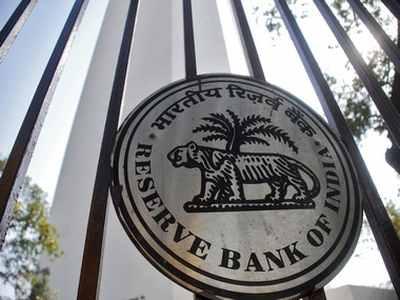Photographs: Reuters Business Standard
Ahead of the announcement of the monetary policy for 2013-14, slated for May 3, the Reserve Bank of India will have to weigh contradictory signals.
On the one hand, the most recent figure for the wholesale price index-based inflation, or WPI, shows that it is below six per cent for the first time in three years.
Core inflation -- inflation in non-food manufactured articles -- is at 3.5 per cent.
This moderation in the headline number has been accompanied by a collapse in growth, which is likely to have been five per cent for the financial year 2012-13.
. . .
RBI's dilemma: Should interest rates be cut or not
Image: RBI governor D Subbarao.Photographs: Reuters
From this point of view, it is difficult to see how the RBI can avoid cutting interest rates.
However, there are numbers that militate on the other side as well -- in particular, consumer price index-based inflation, or CPI, which is still in double digits and has shown no signs of softening.
The RBI will also be worried that commodity prices, which have aided in the decrease of the WPI, are unpredictable, and may well go up again.
Oil, for example, is hardly likely to remain below $100 a barrel, and has already shown signs of moving up to at least the $110-115 zone.
. . .
RBI's dilemma: Should interest rates be cut or not
Photographs: Reuters
A revival in world growth, especially in China and the United States, would likely push commodity prices up further.
That would also be bad news for India's outsize current account deficit, on which the RBI will have one worried eye.
The RBI will also consider that it cut rates by 25 basis points in March, following a cut of similar magnitude in January.
Once a course of medicine has started, it is not usually advisable to stop halfway -- although the RBI did indicate in its March statement that the headroom for further easing was strictly limited, given the central government's precarious fiscal position.
. . .
RBI's dilemma: Should interest rates be cut or not
Image: The transactions involve banks and MFs entering into banned forward contracts.Photographs: Reuters
The main question, of course, is what the utility of a cut in rates would be in the first place.
If the Centre finds itself unable to speed up the process of clearances, and if the private sector continues to worry about political and administrative risk, then will, say, a 25-basis point cut in the repo rate make much of a difference?
It would, perhaps, in that inventory accumulation is very sensitive to rates -- and thus a cut might help spur the private sector into conducting some of its long-postponed purchases.
It might also help with de-bottlenecking in the economy, and so the cost to growth of the RBI doing nothing might well be too high.
. . .
RBI's dilemma: Should interest rates be cut or not
Photographs: Reuters
The market appears to expect a 25-basis point cut, and it is reasonable to assume that a policy relaxation of that magnitude has already been priced in.
It is worth remembering, though, that in last year's policy for 2012-13, the RBI cut rates by 50 basis points, after raising them by the same amount in the previous year's annual policy.
Clearly, the RBI is loath to sit on its hands when May rolls around.
But worries about food and consumer inflation -- as well as the current account gap, the suppressed inflation of fuel prices, and the possibility that the Centre's fiscal consolidation will be incomplete -- might cause it to review its stance this May.
There is just about headroom for the RBI to do something, but not a sufficient amount, perhaps, for it to do enough.







article